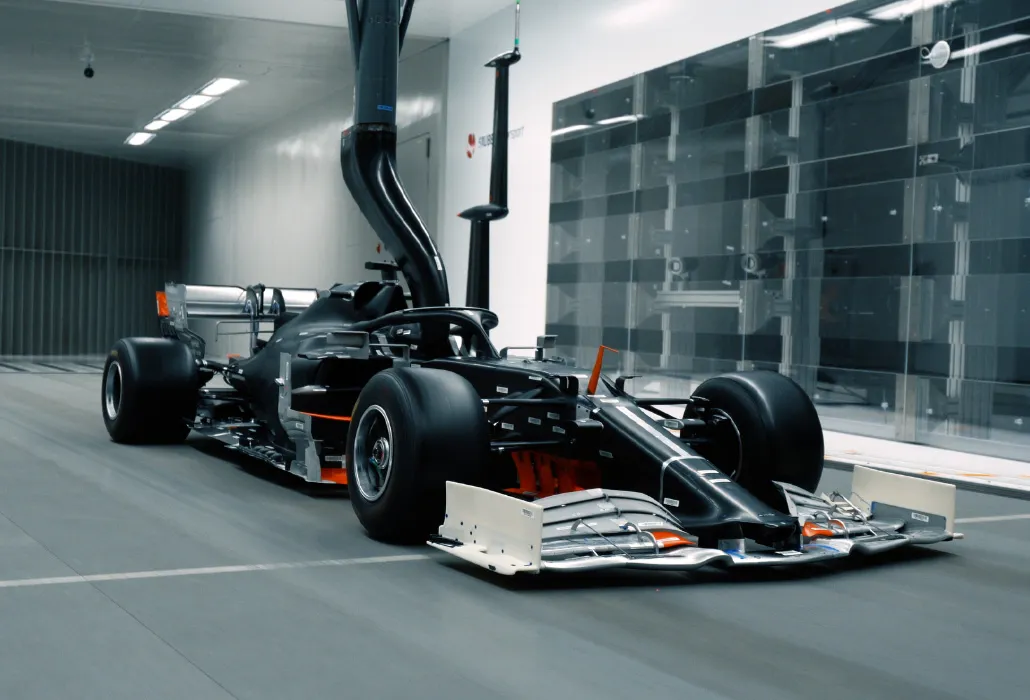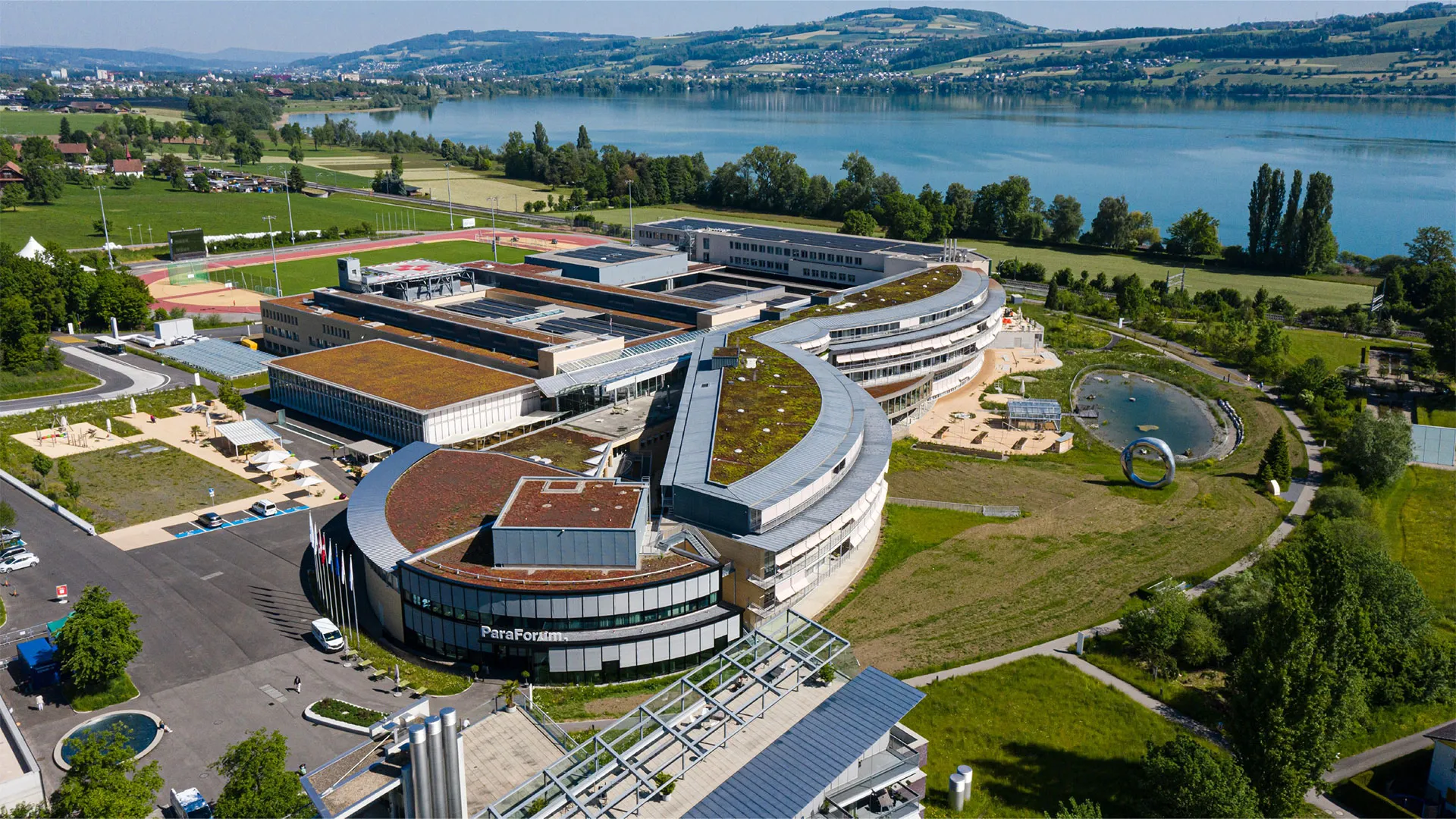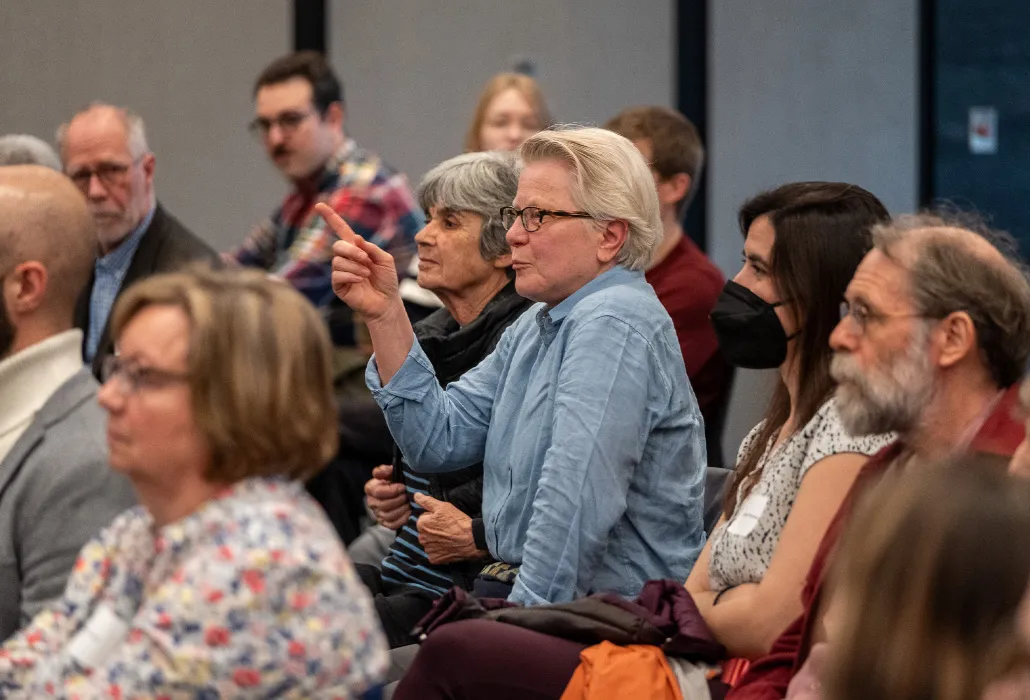
Success is a marathon
The door opened. Everyone in the audience turned to look. They started to applaud when they spotted him. Marcel Hug rolled quickly into the room. The world-famous Swiss wheelchair racing athlete hadn’t let a delayed flight stop him from making it to this panel discussion in the US city of Boston.
Photos: Consulate General of Switzerland in New York/Swissnex (Event, Target photo), B.A.A. (Headerbild), Sauber (racing car), Swiss Paraplegic Foundation (others)
Text: Belinda Steinmann
He powered his wheelchair up the ramp and onto the stage using his strong arms. Having skilfully tackled a tight turn, he stopped exactly where he needed to be. The audience was impressed with Hug’s speedy entrance. Three days after this appearance, he moved with even more speed in the Boston Marathon. In fact, he was moving so fast that one of the many corners along the course caught him out, causing him to crash. But he still went on to win the race – and even finished in a record time.

Marcel Hug appeared on a panel in Boston.
Swiss innovation impresses in Boston
What does it take to break a world record? The
and organised a panel discussion at the prestigious MIT in Boston to answer that very question. It took place on 12 April, just a few days before the Boston Marathon, with Marcel Hug and the Swiss team responsible for developing his high-tech sports wheelchair as special guests. “Elite wheelchair sports require elite equipment,” said Stefan Dürger. The Managing Director of Orthotec launched the project seven years ago. And the result – the OT FOXX – is now being dubbed the fastest racing wheelchair in the world. Part of the Swiss Paraplegic Group in Nottwil, Orthotec specialises in aids.Marcel Hug trains in the company’s state-of-the-art wheelchairs. Stefan Dürger got the athlete on board as a key player for the project along with Sauber Technologies, a Hinwil-based company belonging to the Formula One Group. Project Manager Adrian Schwarz represented them in Boston: “You can’t make any compromise if you want to be at the top of your game – just like in Formula One. That applies to the materials and the technology.” And that’s how Marcel Hug ended up being strapped to a special structure in a wheelchair in a wind tunnel where racing cars are usually taken for aerodynamics tests. All with one major common goal in sight – winning gold in the OT FOXX at the Tokyo Paralympics. The exceptionally talented Swiss athlete ended up winning four out of four gold medals in Japan. And the sporting world agreed that his performance was sensational!
Leading the way
The conversation in Boston turned to the unique network of services of the Swiss Paraplegic Group, which was said to be setting a positive example for other countries. The comprehensive, lifelong support offered to people with spinal cord injuries is one success factor:
- Switzerland is leading the way when it comes to getting people with spinal cord injuries back into work, with the figure surpassing 60%.
- 1.9 million members make a significant contribution to the finances of the Swiss Paraplegic Group. That’s over 20% of the Swiss population.
- Wheelchair sports are so important in inspiring an active society. Swiss para athletes are performing at world elite level in a number of sports, especially in wheelchair racing events.


Top photo: Formula One racing cars are usually tested in the wind tunnel in Hinwil in the canton of Zurich.
Bottom photo: Human and machine in harmony. Marcel Hug in a wind tunnel test at Sauber.
Speed is not enough
For OT FOXX star Marcel Hug, the concept of success is constantly evolving. It involves hard work that never ends. That includes work on himself as an athlete and work on the equipment. The whole sport benefits from those efforts, with all athletes being able to get their hands on the wheelchair from Orthotec since its launch in 2021. This means that more and more international athletics stars are boosting their performance with high-tech Swiss innovation. Instead of being afraid of the competition, Marcel Hug welcomes progress. “I love being at the height of innovation,” he told the audience in the academic hub of Boston. He also spoke about the importance of inspiring young people to take up wheelchair sports. “Our mission is about so much more than setting records for the fastest speed,” added panellist Stefan Dürger. “We want to promote the freedom of movement.” Findings from top-level sport are fed directly into projects that aim to improve the lives of people with spinal cord injuries and other similar limitations. That includes the materials, measurements for the ideal wheelchair sitting position and the development of equipment for mass sport, leisure activities and therapy.

The event organisers (from back left to front right): Benjamin Bollmann, Joachim Tomaschett, Jessica Püntener, Stefan Dürger, Rosina Colazzo-Franzese, Adrian Schwarz, Brendan Karch, Paul Odermatt, Christina Chase, Marcel Hug, Patricia Eachus
Stronger together
During the conversation, moderator Christina Chase also uncovered the fact that this technology project is based on incredible teamwork and a special relationship. The partnership is based on mutual trust and unwavering commitment to the common goal. But success is a marathon, not a sprint. A marathon that has brought the Swiss team to the East coast of the United States. This was a childhood dream come true for Orthotec’s Managing Director. Back when Stefan Dürger was an engineering student, the , or MIT, was the place where all engineers wanted to be.
And here he found himself talking to Christina Chase, CEO and Co-Founder of the MIT Sports Lab, in one of the university buildings. This was “well deserved” according to Joachim Tomaschett, the Vice-Consul of the Consulate General of Switzerland in New York, which made this special Swiss/USA shared platform possible. He believes that there’s no better example of Swiss excellence than one of our elite athletes and several of our top engineers working together to develop innovations at the highest level for the benefit of society. Co-organiser Benjamin Bollman from Swissnex – the global network connecting Switzerland and the world in education, research and innovation – was keen to point out the value added when human performance, teamwork, technology and design come together in perfect harmony.
He came, he crashed, he conquered
Marcel Hug made sure that the words expressed on the stage were translated directly into action on the street. The Paralympic medallist had already won the wheelchair marathon in Boston six times. And he went on to win the 128th edition of the race and made sporting history in the process. Completing the marathon in 1:15:33, he beat the previous record (also set by him) by more than 90 seconds. This result is even more impressive when you realise that he took one corner too fast and ended up crashing into a barrier. Ever the pro, he recovered in seconds and went on to claim victory. Fellow Swiss athletes Manuela Schär and Patricia Eachus performed exceptionally well in the women’s wheelchair race too, coming second and fourth respectively. Athletes in the OT FOXX managed to win three out of six possible medals – a shining result for the engineer team.

Marcel Hug with the golden laurel wreath at the finish line of the 128th Boston Marathon.
Werden Sie jetzt Mitglied und erhalten Sie im Ernstfall 250 000 Franken.
Spenden Sie jetzt und unterstützen Sie unsere Projekte zugunsten von Querschnittgelähmten.








